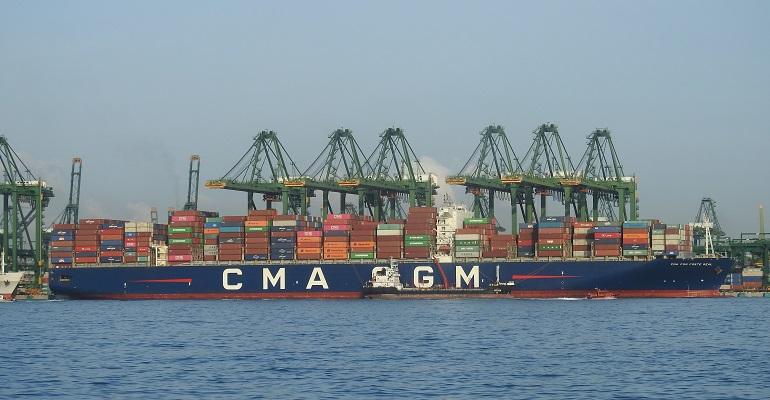With no let-up in the congestion and delays to container shipping even as lines have deployed all the available capacity this has resolve the issue.
Analysts Sea-Intelligence examined how port congestion and delays had actually resulted in net decreases in capacity on the transpacific and Asia – Europe trades despite containers lines deploying significant additional tonnage. In a simple example if a six-week roundtrip service with six 10,000 teu vessels deployed becomes a seven-week round service, and additional 10,000 teu ship, or a 16.7% increase in nominal capacity, is required to keep the same level of weekly capacity.
Looking at the transpacific trade in 2021 the analyst said that lines would have had to increase nominal capacity deployed by more than 20% to maintain the same level of weekly capacity as offered previously. As a result compared to 2020 or 2019 net capacity on the transpacific has decreased in 2021 despite the injection of more tonnage.
“This means that despite the factual injection of significantly more vessels into the Transpacific, the cargo-carrying capacity on a roundtrip-basis measured in teu days has actually declined. We see a similar impact on Asia-Europe as well,” Alan Murphy, CEO of Sea-Intelligence said.
Container lines are ordering significant new capacity but this will not arrive till 2023 and 2024, however, even if the vessels did arrive earlier the analyst said it would not solve the problem as the additional tonnage would just get caught up in supply chain bottlenecks on the landside.
“The resolution has to come from solving the congestion problems on the landside. This does not only imply solving the congestion in the ports, but also the hinterland infrastructure related to trucks, chassis, rail, etc,” Murphy stated.
Copyright © 2024. All rights reserved. Seatrade, a trading name of Informa Markets (UK) Limited.
Add Seatrade Maritime News to your Google News feed.  |

